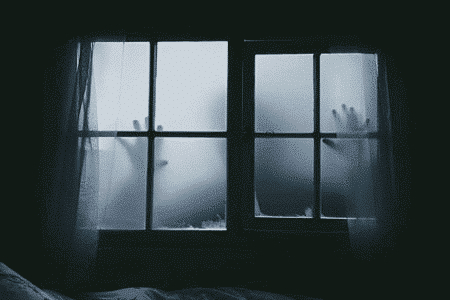Do you believe in ghosts, haunted places and demonic witches? The

Villa Belza in Biarritz, a house haunted by ghosts
For some, it’s a fairytale castle, for others a haunted house. This is Villa Belza, a neo-medieval manor house built into the cliffside in the 1880s by architect Alphonse Bertrand, who also designed the Grand Hôtel in Biarritz.
Located between the Côte des Basques beach and the Port Vieux beach, this villa in Biarritz is the talk of the town. There are rumors that the house is haunted by ghosts, plagued by paranormal phenomena: disturbing silhouettes at the windows, shutters that slam without the slightest breath of wind, and rumors of occult rites and black magic…
Its neo-Gothic keep, topped by a pepper-pot turret, gives it an eerie, mysterious appearance worthy of a horror film. Brrrrr… And if we told you that Belza means “black” in Basque, would you believe us?
Louise, the ghost of Bidache castle
First wife of Antoine II de Gramont, comte de Guiche and sovereign of Bidache, Louise de Roquelaure died in strange circumstances on November 9, 1610, beheaded for the crime of adultery. Since then, legend has it that the Countess’s ghost appears every year at the foot of the Bidache castle walls, on the anniversary of her death. She is said to have come to relive her last days and to demand justice.
But that’s not all! The 13th-century Anglo-Norman chronicler Mathieu Paris reports that “pilgrims, merchants and locals could not pass near the castle at night without being robbed and even slaughtered by brigands.” Very cheerful! Following major restoration work, the ancient Basque fortress is now open to visitors. In summer, a local storyteller reveals the history of the Château des Gramont during a torch-lit tour by night.
ALSO READ: Monsters and fantastic creatures from Basque mythology
The witches of Hendaye beach
In the Basque Country, it’s not just old houses that are the scene of paranormal phenomena. Popular belief has it that the beach at Hendaye is haunted by the ghosts of witches burned at the stake during the reign of Henry IV. They used to gather on the beach at nightfall for Sabbath ceremonies. To avenge the fate that had been reserved for them, they returned to scare off any bathers who dared to take a midnight dip on
What is certain, however, is that a major witch-hunt shook the Basque country in 1609. Hundreds of women suspected of witchcraft were tortured and burned alive at the stake, sometimes in their own homes. They were accused of holding black masses on the summit of the Rhune, in the Jaizkibel mountain or in the caves between Sare and Zugarramurdi.
photo@Enrique, pixabay


